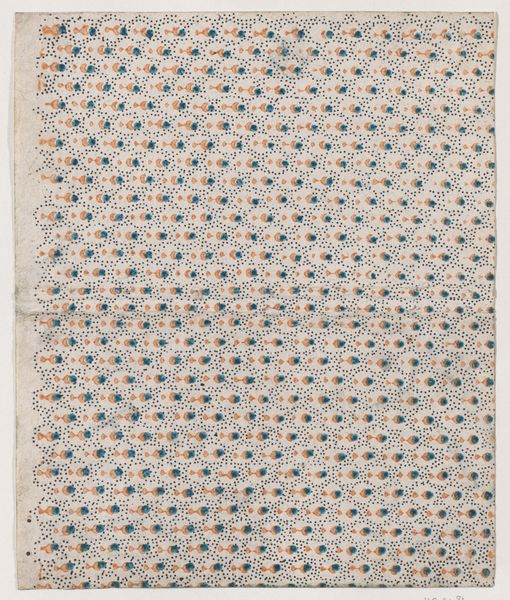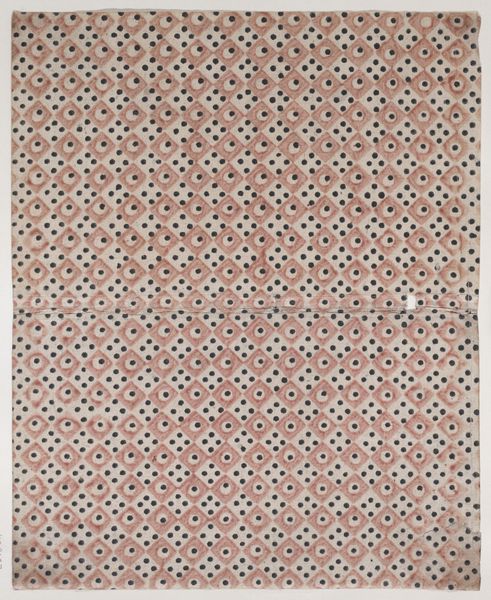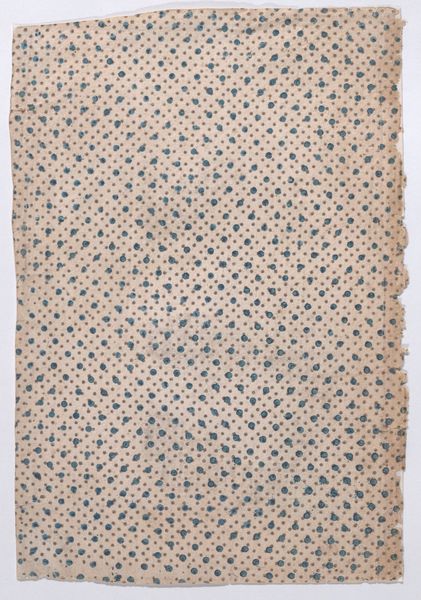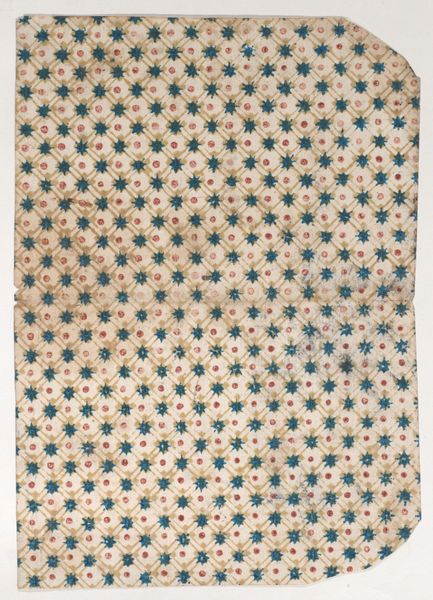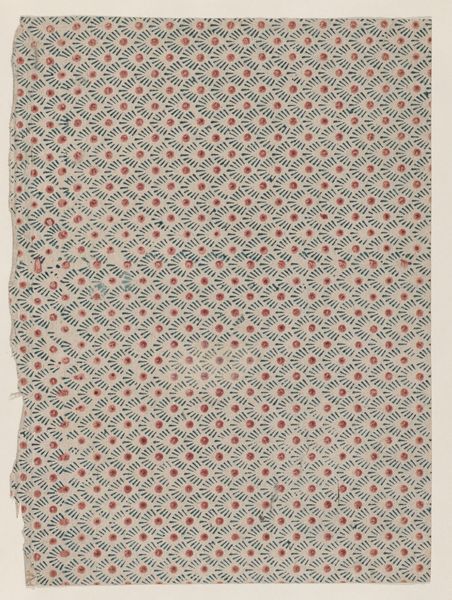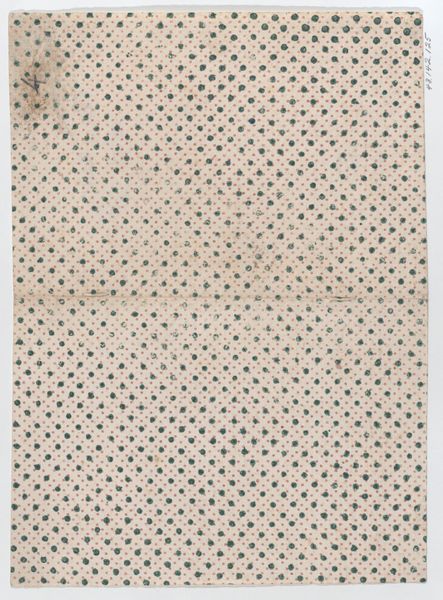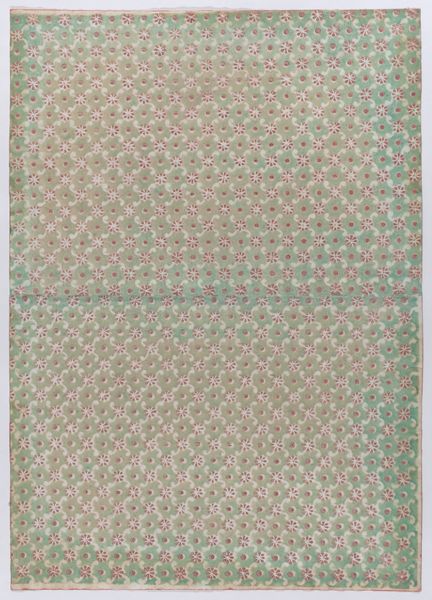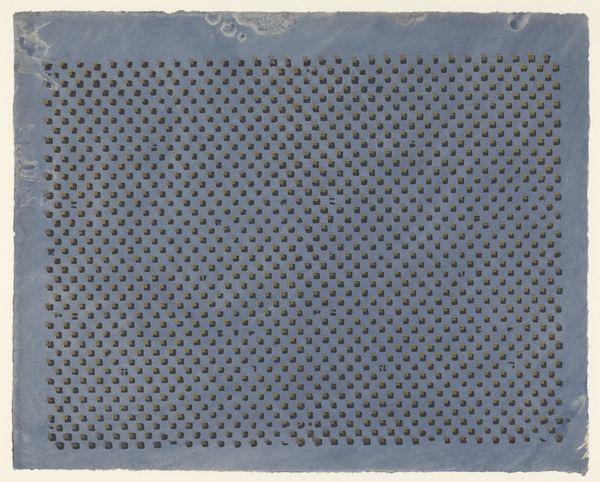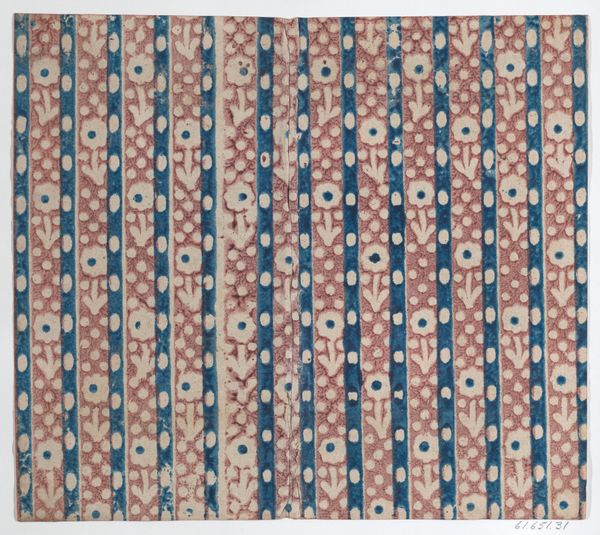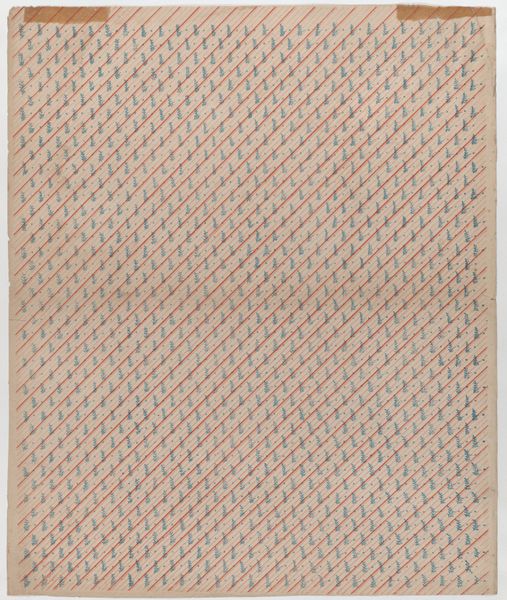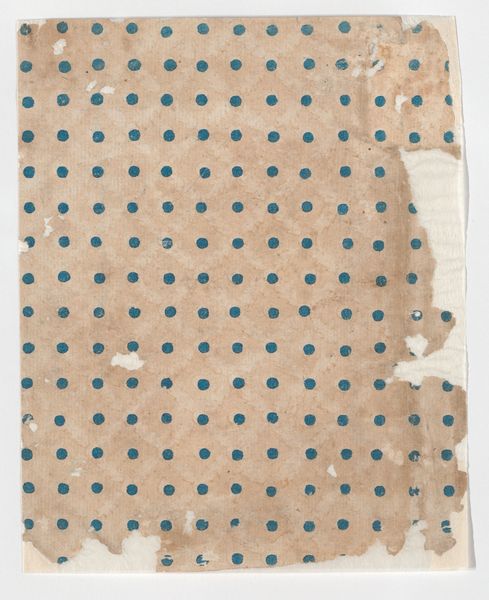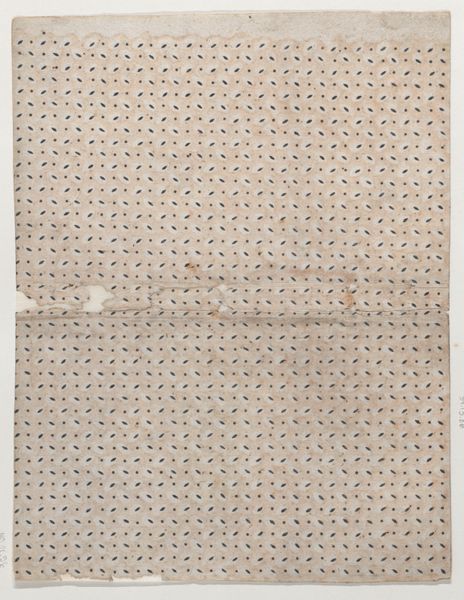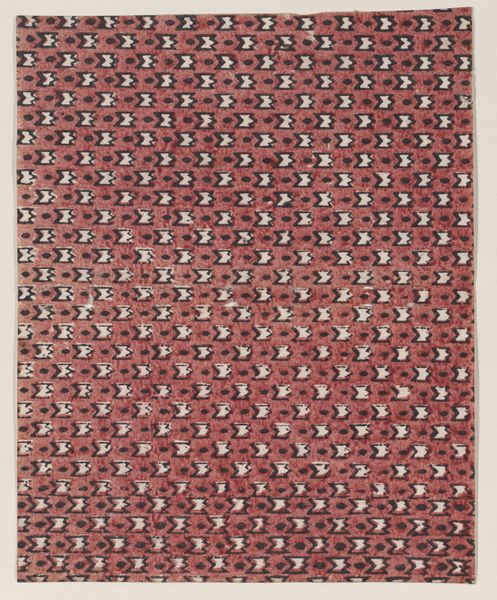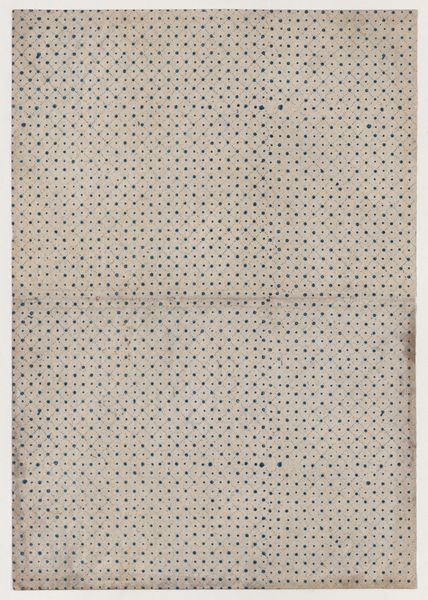
drawing, print
#
drawing
#
repeated pattern
# print
#
repetition of white
#
repetitive shape and pattern
#
organic pattern
#
repetition of pattern
#
vertical pattern
#
regular pattern
#
pattern repetition
#
imprinted textile
#
layered pattern
Dimensions: Sheet: 7 11/16 × 4 5/8 in. (19.6 × 11.8 cm)
Copyright: Public Domain
Curator: Before us, we have a unique piece entitled "Sheet with dot and star design," dating back to somewhere between 1800 and 1900. Currently held in the collection of the Metropolitan Museum of Art, its creation is attributed to an anonymous artist. The work consists of a repeated pattern of dots and stars. Editor: I'm struck by the quiet rhythm of it. It’s like a night sky distilled into pure, unpretentious design. It feels very hand-crafted and homespun, despite the regularity of the print. There’s something deeply soothing and democratic about that, wouldn't you agree? Curator: It raises questions, certainly, about the means of production. The repetitive shapes hint at an early form of textile printing perhaps, a process that would have slowly become more industrialized. It's a glimpse into the democratization of design, as you suggest, but also the economic shifts of the time. Editor: Absolutely, it makes me think about who had access to such materials. Was this mass-produced for a growing consumer culture, or perhaps created within a community with shared aesthetics and resources? The act of repeating a motif like this can be read as an affirmation, even a form of silent protest against uniformity. Curator: Fascinating point! The imagery too - stars in particular - speaks to larger cultural trends, linking ordinary objects to cosmic wonder. Editor: And consider the labor. Was this the work of women artisans? How does the creation of pattern and repetition serve to document these unrecognized contributions? What are the class dimensions here? It opens up so many possible social analyses, doesn't it? Curator: Indeed. Even in its relative simplicity, this patterned sheet offers a powerful lens through which we can examine shifts in material culture and perhaps even discern the shadows of long-forgotten lives. Editor: Ultimately, it highlights that every scrap holds untold histories waiting to be unravelled, compelling us to explore what isn’t always visible at first glance.
Comments
No comments
Be the first to comment and join the conversation on the ultimate creative platform.
